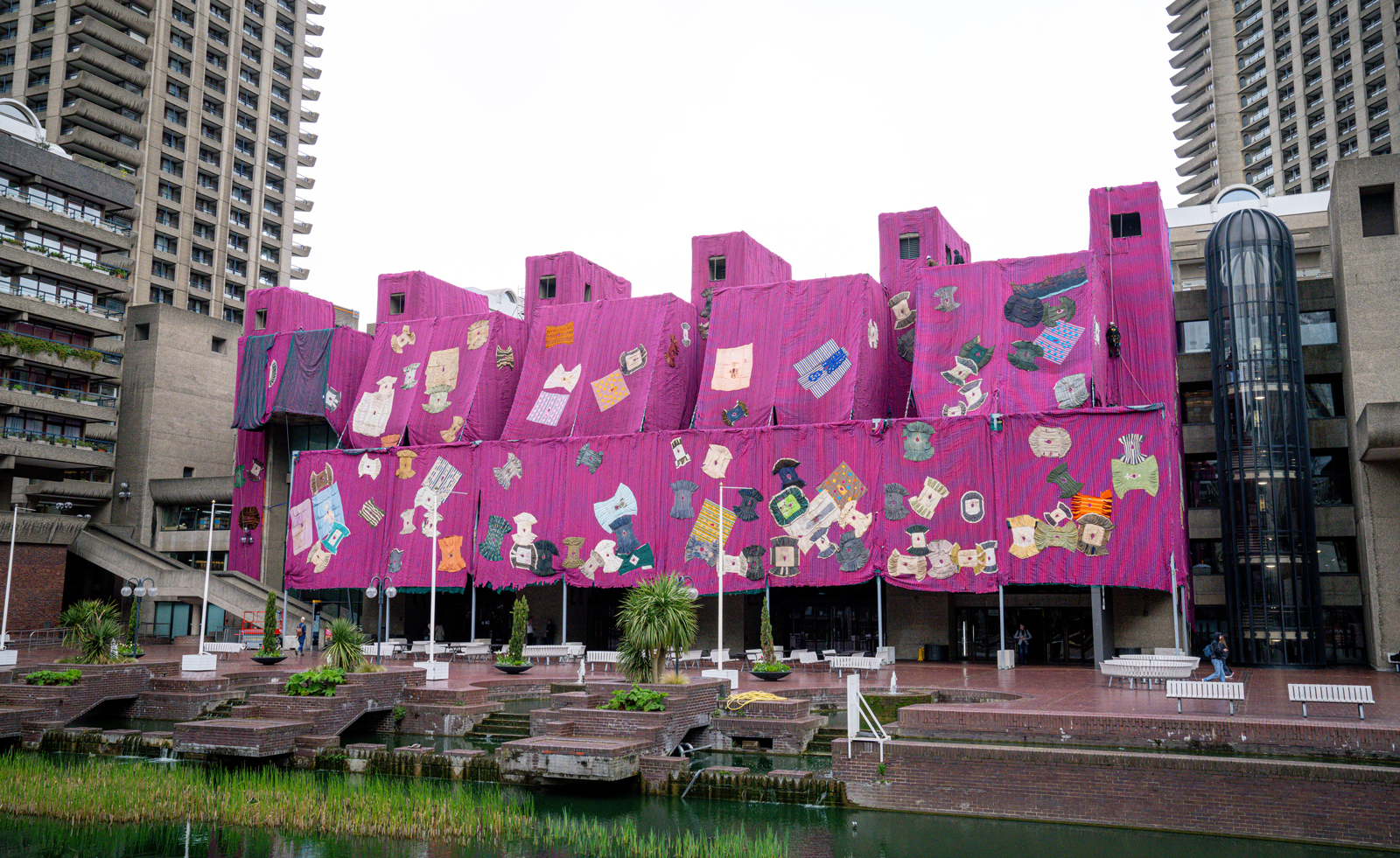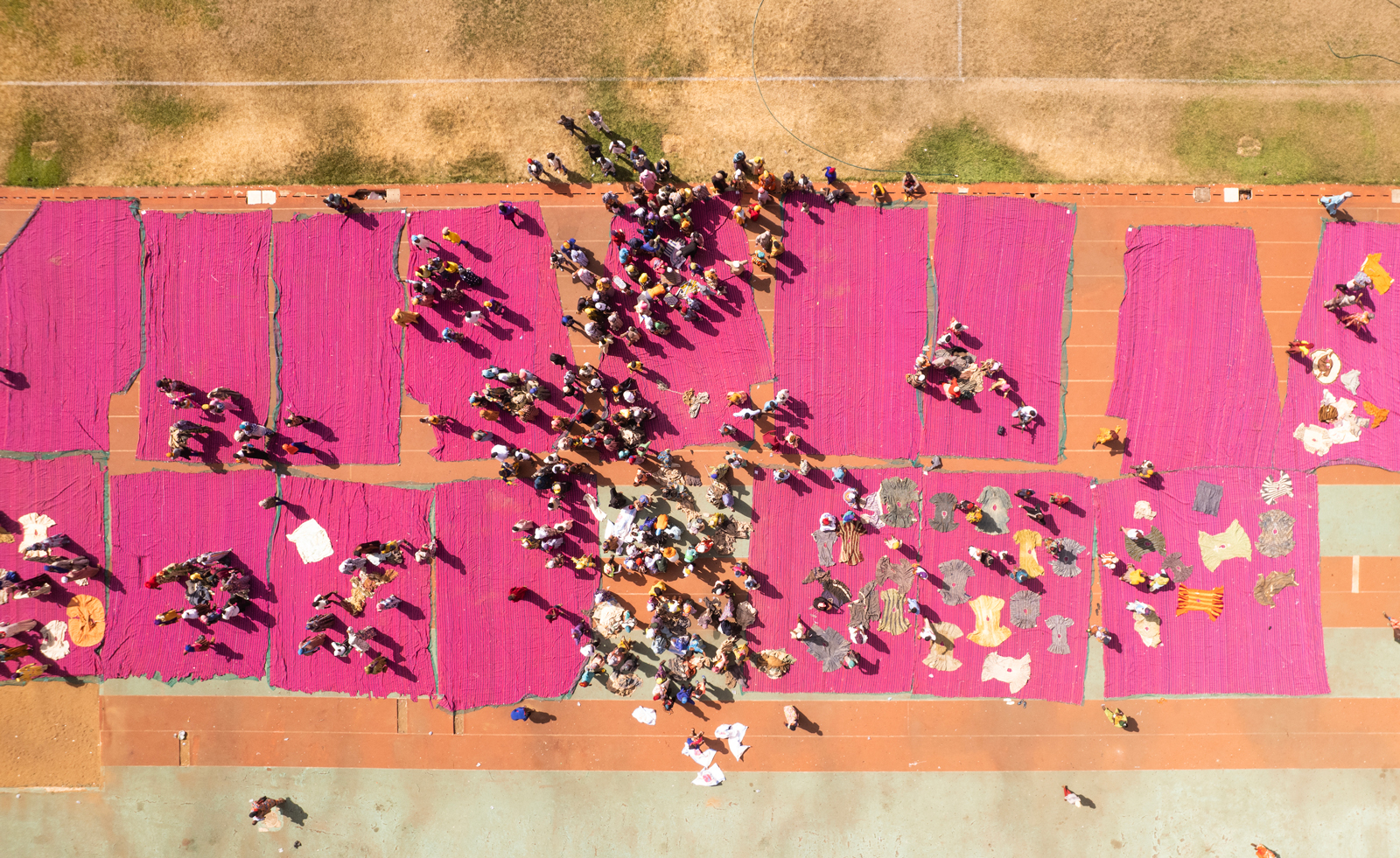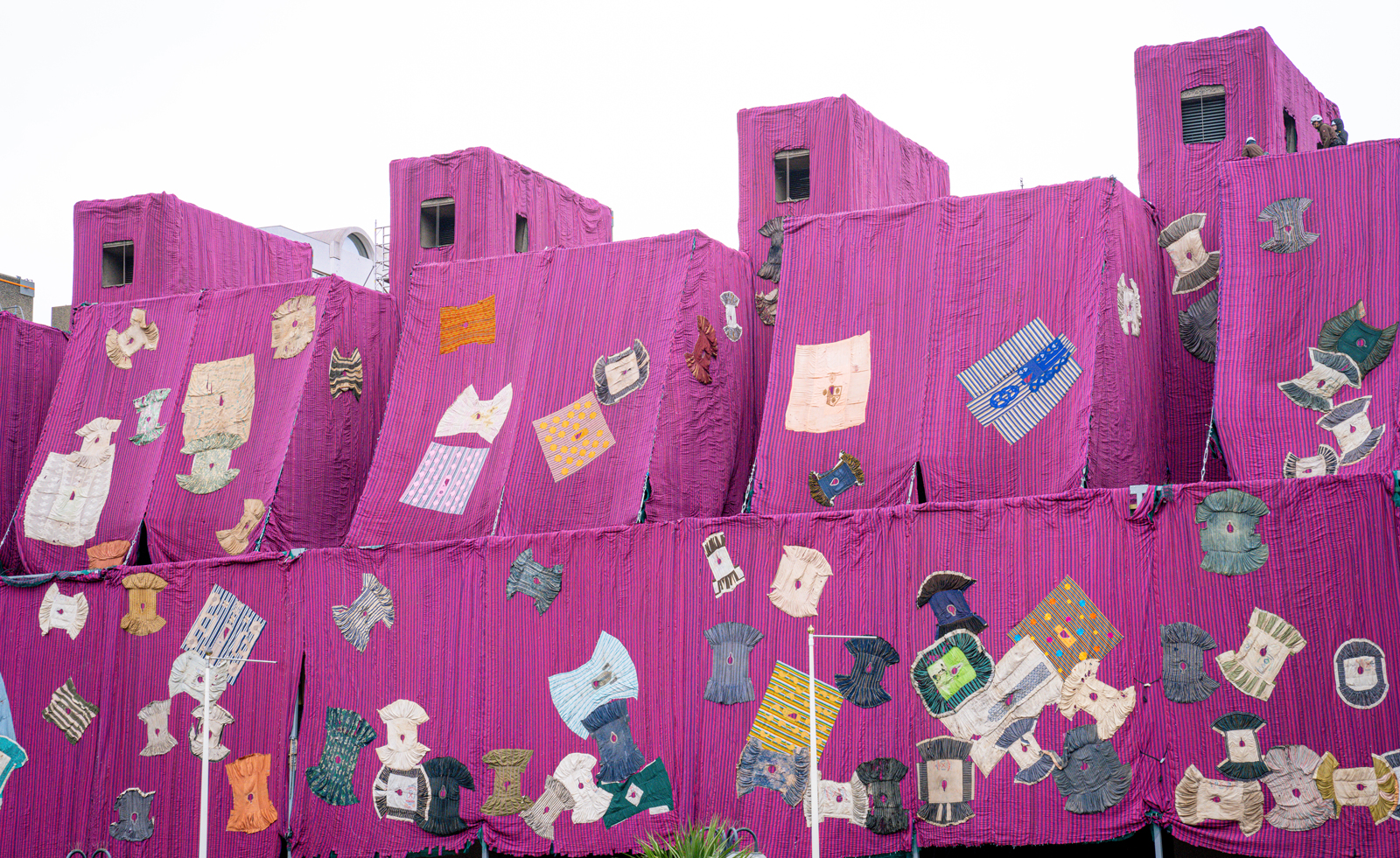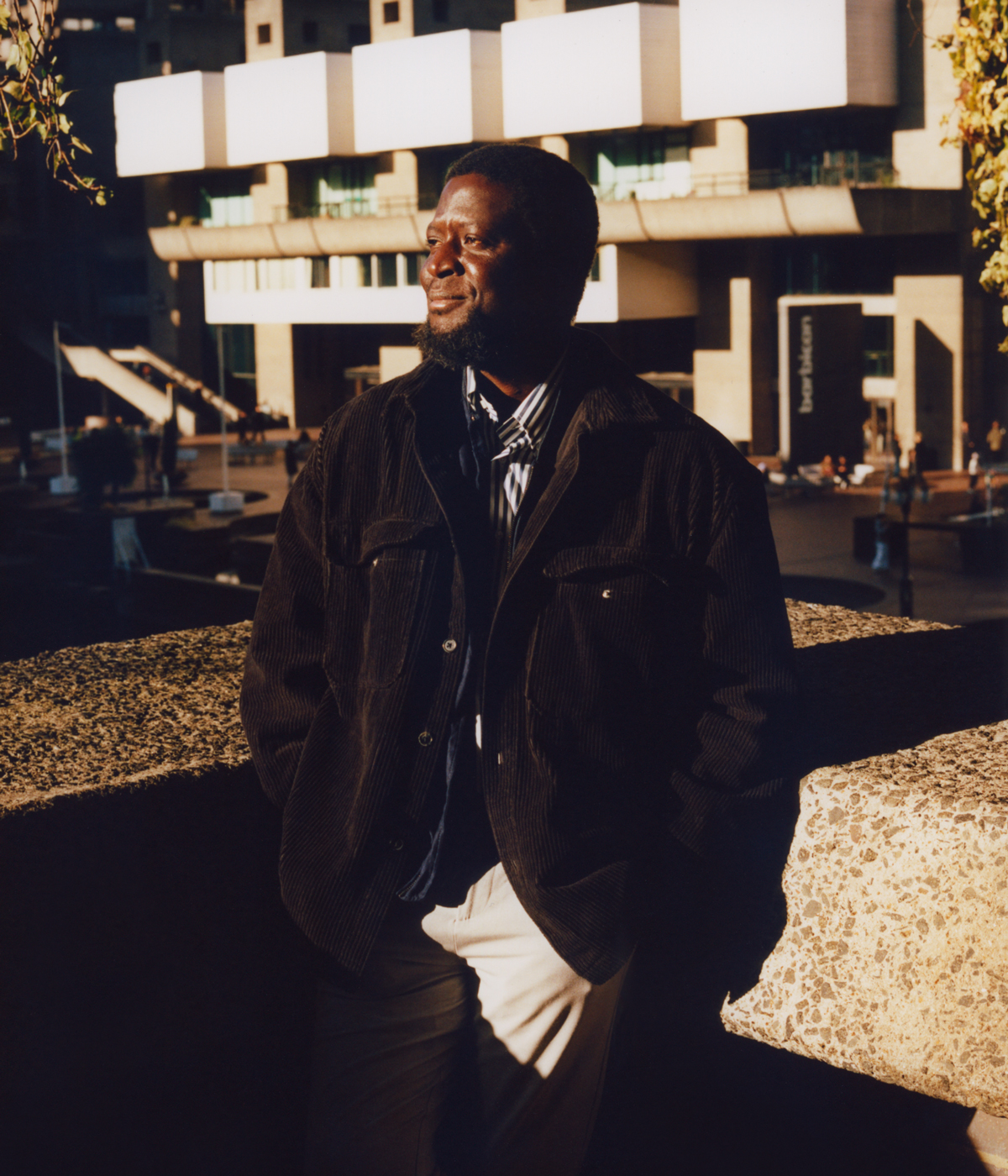
It’s hard to miss Ibrahim Mahama’s monumental work on the day I see it - on an unusually and alarmingly windy day, it is flapping and rippling across the Barbican’s Lakeside Terrace as it is installed - but then that is the point.
For Mahama, the opportunity for bystanders to engage with his art is key in a practice so far defined by a spirit of democracy. In his home country of Ghana, his contemporary art centre provides the social infrastructure for arts education; in his exhibitions internationally, he cultivates a collaborative focus.
Now, Mahama has unveiled possibly his greatest collaborative work - and certainly his largest scale public commission - in the UK yet. Purple Hibiscus, named after Chimamanda Ngozi Adichie’s 2003 novel, encompasses around 2000 square metres of billowing panels of pink and purple fabric, woven and sewn in collaboration with hundreds of craftspeople from Tamale in Ghana. On the panels, around 100 batakaris have been embroidered - robes traditionally worn by both ordinary people as well as northern Ghanaian royals - which Mahama has been collecting over the years, without at first knowing for what purpose.

The project is a natural extension of his fascination with materials, building on previous work which saw him reflect on global exchange, communism and colonialism through jute bags. He became interested in their physical journey - originally created in India and Bangladesh, they became useful for the transmission of cocoa and became a commodity themselves, becoming stained and ripped and stitched back together. The transformation began a new life cycle triggered by human intervention.
‘I was looking at it thinking it almost became like an extension of the human body,’ says Mahama. ‘And I started thinking that many other things could also be extensions of the body. So that's when I started collecting these [batakaris]. It's very commonplace material, people buy it, or inherit it. There's elements of time traditions trapped within the material. I was very much interested in this sense of history within them. But people will not just give you these fabrics, because they feel very strongly attached to it. So normally, what they will do is have to either put pee, or some kind of human excrement, on to them, I believe as a way of detaching the soul, of the body away from the material. If you took the material, because they feel like their souls are connected to it, you could go and harm them spiritually, or come at them from a place of superstition.’

By placing the material in a new context, Mahama is interweaving the stories and the memories with a new life, also stepping away from the personal through the process, which saw him work with around 1,000 people in sewing everything by hand.
In a vibrant pink hue, it’s hard to miss amongst the brutalist grey lines of the Barbican. ‘That started as a joke,’ Mahama adds. ‘When I was asked about this commission, I said, Wouldn't it be interesting because I always say the UK has shitty grey weather. Wouldn’t it be good to do something that is contradictory to the weather? Like pink! And then I was like, okay, why not? And that's where it came from. And I never went back.’
By displaying the work outside, Mahama is encouraging the next stage of life for the textiles, uniting the deep-rooted traditions of the past with the unpredictability of the future. 'It will change and weather over time. But that's the whole point of the work, the work is supposed to change. If you leave a fabric out in the rain for a year, it will not be the same when you pick it up. There might be rips and tears within aspects of the work. But then we repair and fix as we go along. And that is one of the most important things politically about work that is meant for the public.’
Ibrahim Mahama: Purple Hibiscus is at the Barbican Lakeside Terrace from 10 April – 18 August 2024








